‘The Dark Knight’ came out 15 years ago — and changed Batman. Here’s a look at Batman’s origins and legacy
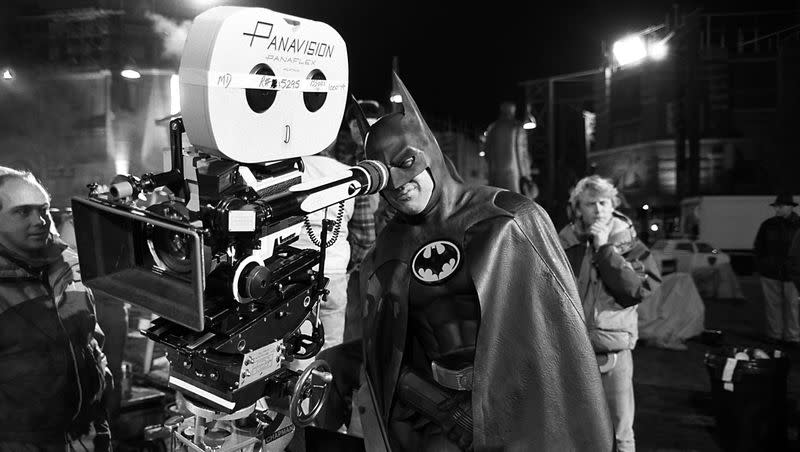
- Oops!Something went wrong.Please try again later.
- Oops!Something went wrong.Please try again later.
Since Batman’s debut on March 30, 1939, he has become something of an American cultural phenomenon. He’s a unique superhero because he doesn’t possess any superpowers. After Bruce Wayne sees his parents murdered, he develops a bat-persona and dedicates his intellect, wealth and agility to becoming powerful — to becoming the Batman.
For several decades, different artists and actors have portrayed Batman in unique ways. While he’s always the same ominous, aristocratic recluse who has advanced technology and possesses impressive fighting skills, the culture in which the films were created transforms the meaning of the Batman.
Related
Adam West, Michael Keaton, Christian Bale and Robert Pattinson have each played Batman in different films and television series and have become some of the most famous depictions of Batman. Tracing the origin of Batman, as well as the different portrayals of his character, shows the interesting ways “Batman” films have responded to the surrounding culture.
And perhaps why Batman endures is the simultaneous universality of his story and the uniqueness of each depiction.
The world and origins of Batman
As a vigilante bent on justice, Batman remains intent on protecting the city of Gotham — a fictional place where criminals run amok and corruption exists throughout the institutions of government — in the police force, the mayor’s office and more.
Before the Batman universe was conceived, Gotham was used as a nickname for New York City. In a Feb. 13, 1807, letter, Washington Irving (author of “The Legend of Sleepy Hollow”) bestowed that nickname on New York City and used it throughout the Salmagundi Papers.
The creators of Batman didn’t intend for Gotham to be understood exactly as New York City. According to The New York Times, Bill Finger, a collaborator on the original “Batman,” said that he found the name for the fictional city by flipping through a New York City phonebook. The comic books generally situate Gotham in New Jersey.
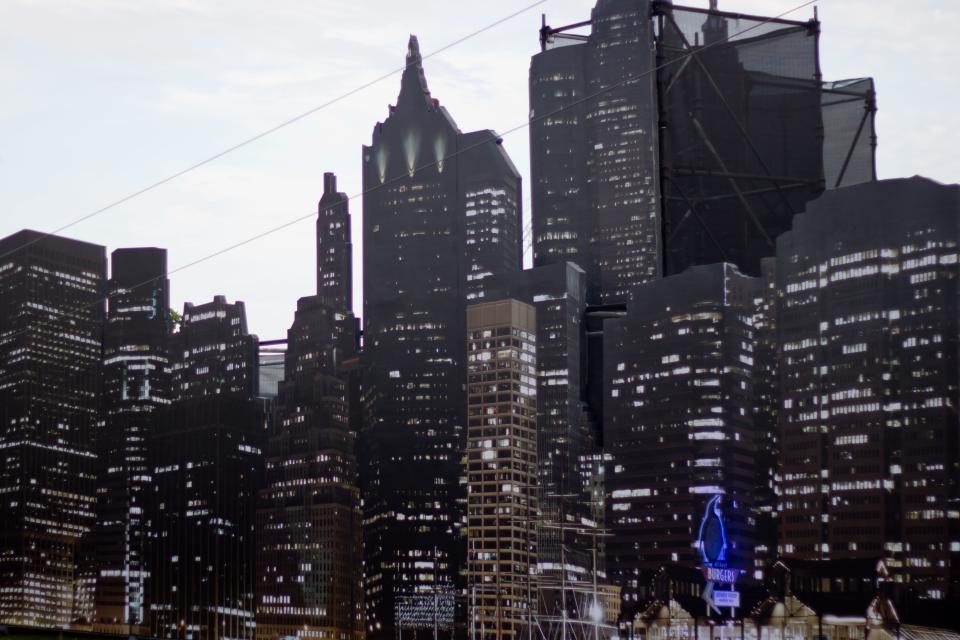
The origin story of Batman has different variations, but the core events remain the same. The Wayne family is one of Gotham’s founding families and in the contemporary universe, they are socialites. Bruce Wayne watches his parents, Thomas and Martha Wayne, be murdered by Joe Chill — a mugger who in some stories was hired as a hitman to kill the Waynes, but leaves Bruce alive (sometimes it’s Matches Malones who kills his parents).
After that, Wayne swears an oath to get rid of crime in the city. He lives in Wayne Manor, joined by his butler Alfred Pennyworth at different points in the story. Wayne spends his days training to become the Batman. He created Wayne Enterprises, which is a company that allows him to run business affairs, but also create things like the Batmobile for his superhero gig.
Related
‘The Batman’ star Robert Pattinson explains how he found his own Batman voice
Fans think the new ‘The Batman’ trailer teases the Joker’s appearance
Wayne in the series is also a philanthropist. He runs the Wayne Foundation, which is a charitable founding company for two charity organizations: the Thomas Wayne Foundation and the Martha Wayne Foundation. These organizations provide medical care, free schooling and housing for orphans. It’s possible that Wayne was a graduate of Yale University at Gotham, earning a diploma of law. This appears in one of the comic books.
Both a playboy and philanthropist, Wayne’s personality throughout many depictions is often brooding and introverted. His identity as the Batman is secret — only a few people know throughout the series — and because of that, he has become reclusive. He also has gone by other names: Dark Knight, Matches Malone and Caped Crusader.
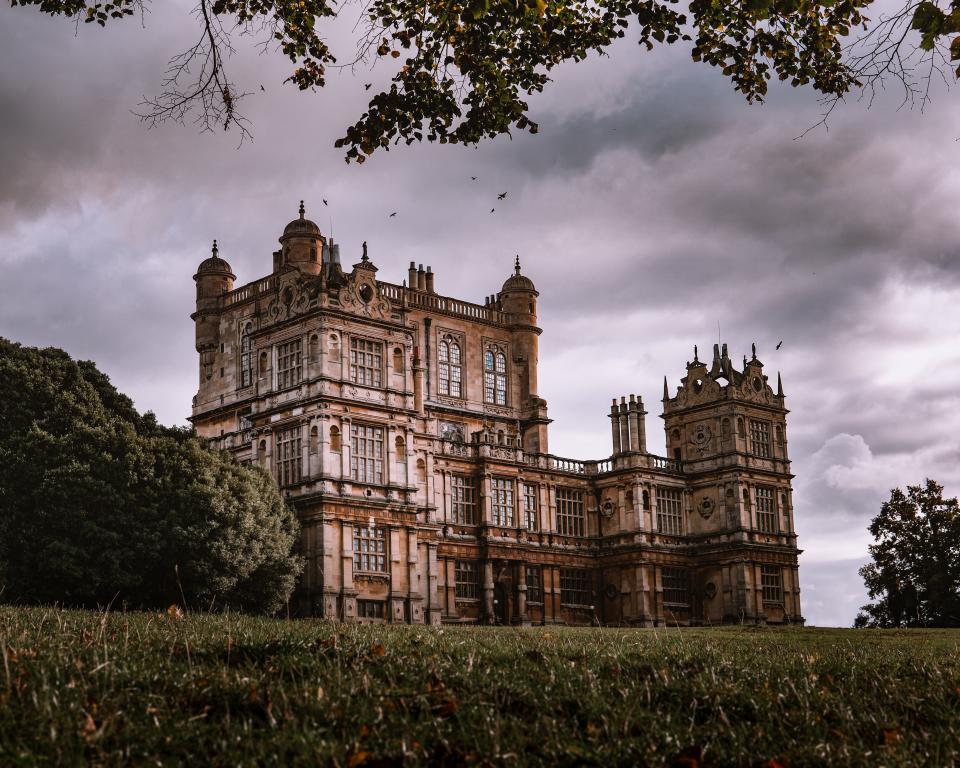
Batman was first created on March 30, 1939. Finger and Bob Kane collaborated on his design. According to Kane’s autobiography, Kane went to Finger with Batman’s design and Finger started helping him in the creative process by suggesting design choices that would make him look more ominous.
Soon, they came up with the idea of Batman wearing a dark gray suit, a black mask and black bat wings.
Batman’s comic book debut
His debut was in a May 1939 comic book, “The Case of the Chemical Syndicate.” This comic book introduces Gotham Police Commissioner Jim Gordon, who becomes a fixture throughout the series. In the comic, Gordon visits a crime scene with Wayne. Later, Batman (spelled in the series “Bat-Man”) appears and defeats criminals. Gordon talks to Wayne about the emergence of this figure, to Wayne’s bemusement.
“It was a markedly different Caped Crusader than the one we know now — a noir-tinged, street level do-gooder who was more than willing to get his hands dirty in the interest of the greater good,” DC’s website said. “But even in this earliest story, which is only six pages long, his mind for justice was present, as was his secret identity, unknown to his good friend Commissioner Gordon, who also makes his debut here.”
Batman’s debut cost readers 10 cents a copy, but nowadays, the first issue runs for over $1 million. He became popular with readers and by March 1940, Batman got his own comic book series instead of just being featured in “Detective Comics.” Soon, he also had a sidekick named Robin. Over time, he got more tools like his belt and a plane, which has transformed him into the iconic character he is today.
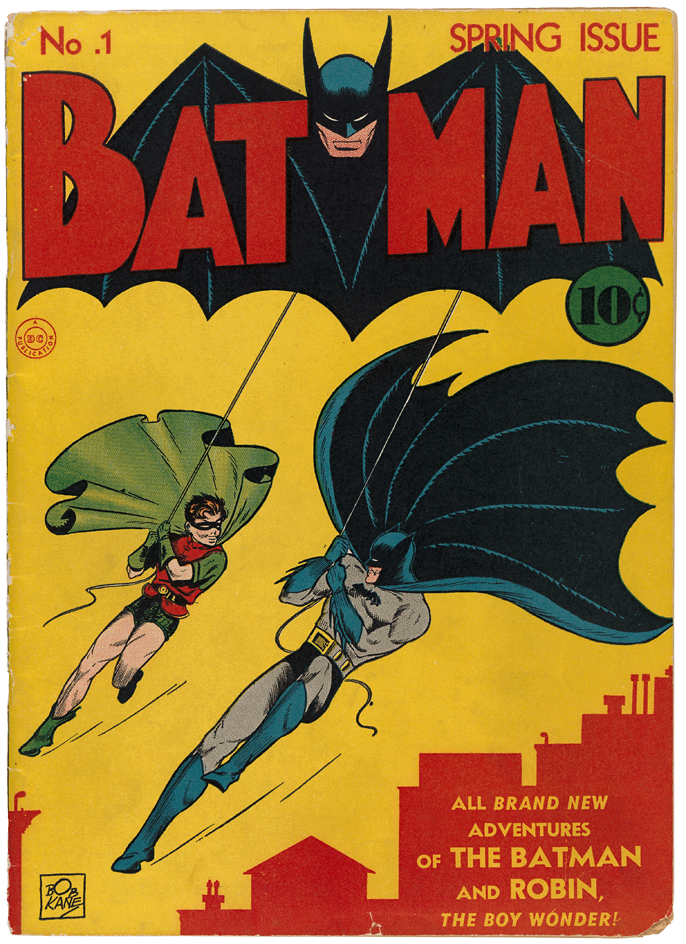
Batman’s most visibly-recognizable villains were introduced in the debut of the first eponymous comic: “‘Batman’ No. 1 introduced two villains who would become integral components of the character’s history: the sneering clown prince of crime, the Joker, and the sultry princess of plunder, the Catwoman (although she was called ‘the Cat’ during her initial appearance),” per Britannica.
Batman’s comic book success continued. Even when comic book reading declined after World War II, Batman maintained his series along with only two other DC heroes: Superman and Wonder Woman. But, according to Britannica, DC decided to soften Batman and make him kinder. Readers didn’t like the rebrand and abandoned the comics.
Adam West — the television series
Enter the smash hit series “Batman,” featuring Adam West as the Caped Crusader: the superhero who really wanted you to eat your vegetables.
In January 1966, this television series debuted as a comedy. Inverse called West’s performance “the kitschiest Caped Crusader.” The show is funny and campy, the costumes are bright and colorful and the heroes are clunky and silly. If you’ve only been exposed to darker depictions of Batman, this one will seem radically different. He tells you to eat your vegetables and he exaggerates all his moves in a comic way.
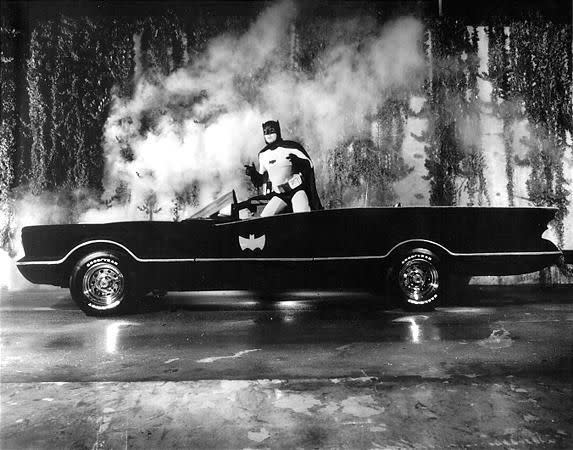
The series is more farce and camp comedy than it is the story of the Dark Knight. Whimsy was what drew viewers to “Batman.” According to Classic TV, at the time “Batman” premiered, the highest-rated shows were not ones that had dark and dreary themes like Batman classically had. Instead, lighthearted comedies like “The Andy Griffith Show” and “The Beverly Hillbillies” dominated the ratings.
So instead of getting Batman as a dark figure, Batman was reinvented in a way that became palatable to the 1960s audiences who were looking for a laugh more than something dark. But the show also embraced moralizing on top of that.
In the series, Batman is a teetotaler. In one funny moment, a woman offers him some alcohol and he replies, “I never touch spirits. Have you some milk?” This kind of moralizing and embrace of “wholesomeness” is pervasive throughout the series. It’s a stark contrast from the earlier depictions of the millionaire playboy Batman.
In fact, it’s become common knowledge that West was cast as Batman due to his participation in a Nestlé Quik commercial — yes, a chocolate milk commercial.
Instead of merely fighting villains like the Joker, Batman engages in a surfing competition with him while he wears bright yellow board shorts. The violence throughout the show that ordinarily would accompany superhero series is subdued by moments like this.
Although “Batman” only ran for three seasons, the series was very successful. That is, until it wasn’t. Per Britannica, ratings for the show plummeted, and then the show was swiftly canceled. But still today, the show is considered one of the greatest television shows in American history, according to Alan Sepinwall and Matt Zoller Seitz’s book.
Michael Keaton — Tim Burton’s ‘Batman’
Batman’s popularity waned after West’s show was canceled, but Keaton’s film caused something of a revival. “Batman,” directed by Tim Burton, came out in 1989 and was the fifth-highest grossing film in history at the time of its release. Jack Nicholson played the Joker in a film where Batman falls in love with Vicki Vale (a photojournalist investigating Batman sightings) and has to defeat the Joker.
Related
Kane was hired as a creative consultant on the film. This film sought to portray Batman in a darker light than West’s television series, which made the casting of Keaton controversial, per Variety. Before taking the role as Batman, Keaton’s career had started in comedy. He was in “Working Stiffs,” “Mr. Mom” and other comedy films. Playing Batman was seen as a pivot for the comedy actor.
Burton had worked with Keaton in “Beetlejuice,” which was critical in Keaton’s casting. At this point in time, Batman’s suit changed from the gray from many comic books and from West’s depiction to an all-black suit — adding to the darkness the film tried to achieve. Critics’ consensus of the film, according to Rotten Tomatoes, was that it was “an eerie, haunting spectacle” and that “‘Batman’ succeeds as dark entertainment, even if Jack Nicholson’s Joker too often overshadows the title character.”
After the release of the film, Keaton’s performance was also applauded. Nicholson’s performance as the Joker was considered one of the best. One of his signature lines is, “You ever dance with the devil in the pale moonlight?” While West’s Joker made jokes and was convivial, Nicholson portrayed the Joker as a man who was willing to do something evil for the sake of evil itself — something that became even more pronounced in the “Dark Knight” trilogy years later.
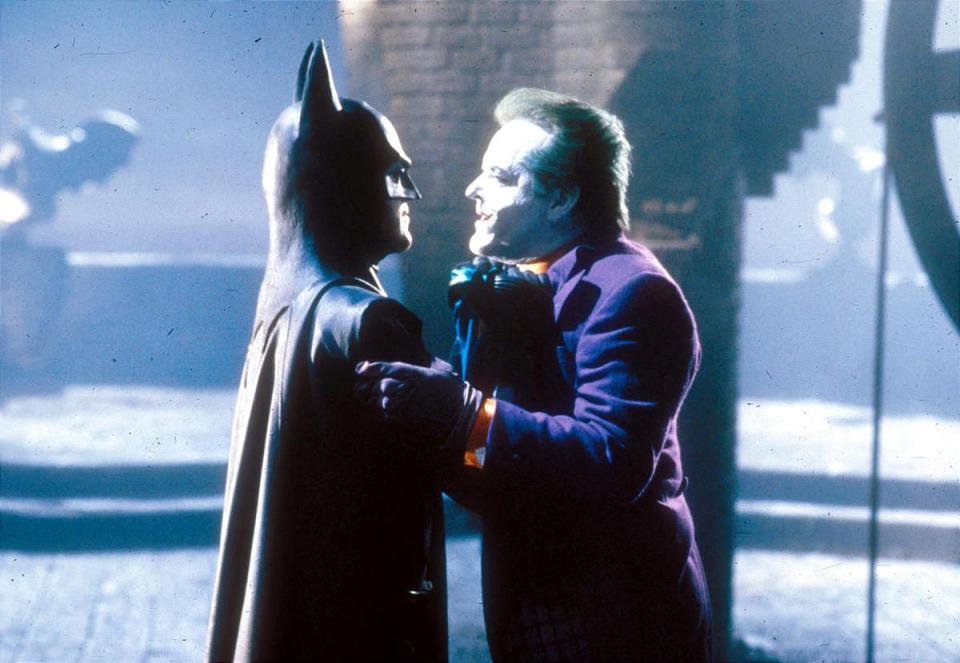
As dark as the film was, the soundtrack tempered it in an interesting way. The soundtrack featured songs from the artist Prince.
One memorable moment from the film is when the Joker and his henchmen enter the Gotham Art Museum. They splash paint on the artwork as Prince’s song “Partyman” plays in the background. The Joker stops at the painting by Francis Bacon known as “Figure with Meat” and says he likes it and his henchmen shouldn’t touch it.
The scene would be scary if it weren’t so comical. The audience knows that the Joker is about to threaten Vale and that Batman will have to come save her, but the music makes it seem like the moment is humorous instead of threatening. It also acts as a cultural commentary on what Batman has become.
About this scene, Decider said, “The ‘Partyman’ sequence is perfect because it can be read as meta commentary on the pop culture legacy of Batman and how Burton is subverting all of it. This moment, pulsating with Prince’s funk, injects a toxic dose of 1966 camp into the film’s otherwise grim and gritty goings on. It literally paints Jack Nicholson’s Joker as a chaos agent there to disrupt the very movie you’ve been watching.”
“This was, of course, Burton’s whole point, to create a film that played against the brightly colored blue Batman people grew up with. And that’s what makes Joker’s preferred method of vandalism so striking. They splash everything in sight with bright, gaudy, colors that wreak havoc on the movie’s — nay, this reinvention’s whole swag,” Decider said.
The film’s success led to a second film, “Batman Returns,” which was darker than the first. Released in 1992, the film debuted in a period of time where viewers were having conversations about the looser standards around explicit and violent content on screen, per Britannica. The film’s dark tone became a flashpoint. Penguin, the crime boss, and Catwoman are the focal point of this film.
Keaton’s Batman in this film does actually kill people, which is different than the vast majority of depictions of Batman. Batman typically has a strict no-kill rule when it comes to his vigilante justice, so this darker portrayal of Batman marked a departure from this strict view of justice.
Part of the reason for this film’s lack of success was that it went too dark, according to Film Stories. While McDonald’s had Batman toys ahead of the film, the film ended up being too dark to be considered family-friendly. It came at a time where television content standards had significantly changed and producers were navigating what boundaries they could push and which ones they could not.
It seems that reinventing Batman as a dark figure who does not have strict ideals about justice ultimately wasn’t appealing and so the sequel’s ratings were low compared to Keaton’s first performance. According to Collider, the film was “a significant comedown from 1989, and a film scorned by parents’ groups and merchandising partners.”
Keaton didn’t return for the rest of the films that succeeded “Batman Returns.” During the Super Bowl, Keaton appeared in the Flash trailer. According to CNN, this was the first glimpse at Keaton’s return as Batman.
Related
Christian Bale — the ‘Dark Knight’ trilogy
Batman films flopped for the next few years, so Warner Bros. decided that it would make a concerted effort to revitalize the franchise that had survived so much.
Christopher Nolan was hired and tasked with making a “Batman” film popular again. Variety reported that Nolan thought the way forward was to pivot into an origin story and to focus on realism. He said about the film, “Ours will be a recognizable, contemporary reality against which an extraordinary heroic figure arises.”
Humanity was Nolan’s focus throughout the debut film. He said to Variety, “Few superheroes have the sense of purpose and destiny that Batman has. He is driven by an incredible sense of rage, sadness and grief because of the tragedy of his parents’ murder at an early age. To me, Batman is the most interesting superhero because he doesn’t have any superpowers. He is very human.”
Christian Bale was cast as Batman, which he said led to Hollywood laughing at him. In an interview with The Washington Post, Bale revealed that he was laughed at for taking the role and that onlookers assumed that the film would not succeed.
The first film in the series, “Batman Begins,” had an impressive box office showing when it was released in 2005, grossing the seventh highest amount that year, according to Box Office Mojo. It was through Nolan’s films that Batman became relatable, but also became a universal character — which tracks with the millennial propensity toward authenticity.
Batman has a strict code around justice in the “Dark Knight” trilogy. While the films themselves are dark and contain violence, Bruce Wayne/Batman ultimately resurfaces as a highly-sympathetic character. He becomes more altruistic than other depictions. Perhaps the films succeeded partially due to the cultural and political climate of the release.
Between 2005 and 2012 (the release dates of the trilogy), Americans were dealing with deep political tragedy as well as greater awareness of human rights crises due to the spread of the internet. Batman in these films seems to respond to this by becoming a symbol of an ordinary citizen doing what’s right.
The story of Nolan’s Batman is articulated best by Alfred the butler in the second film, “The Dark Knight.” Alfred tells Rachel Dawes, Batman’s love interest, that the Batman becomes more than a hero by remaining masked — he becomes a symbol for the city. Even though he’s fraught and flawed as a character, Batman ultimately sacrifices all that he has, including his own reputation and his ability to remain unscathed.
Harvey Dent in the film is supposed to represent the character who fixes corruption “the right way.” Before he becomes Two-Face, Dent abides by ethical and legal standards while Batman doesn’t, but ultimately, Dent fails. As the aphorism goes, “Either you die a hero or you live long enough to see yourself become the villain.” Batman enters the complicated space of being neither hero nor villain — he’s an anti-hero. But Dent falls from his stature as a hero and becomes a villain.
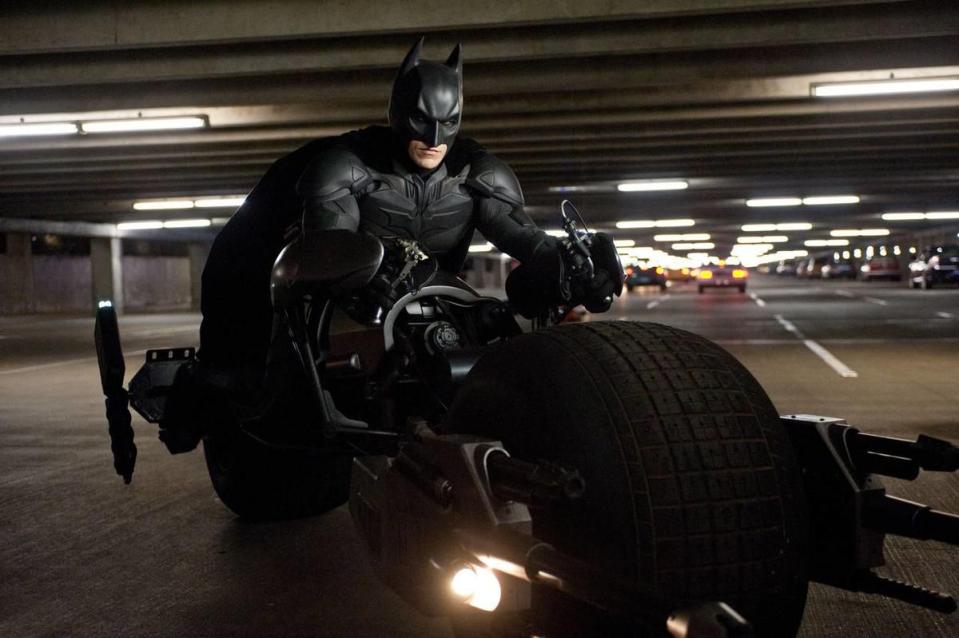
Bale’s performance as Batman is both genre defining and franchise defining. Perhaps due to the inclusion of the origin story, but also due to Bale’s ability to oscillate between Bruce Wayne and Batman, he became inextricably linked with the character. Frequently considered the best Batman, Bale’s Batman was much more noble than other portrayals of the Caped Crusader.
One moment that showed Batman’s humanity was when he was stuck down in the pit in “The Dark Knight Rises.” He had to regain his strength and learn how to climb out of it — a nearly impossible task. Even though he didn’t have any superpowers, he was able to climb out of the pit to go back and defend Gotham. Wayne’s ascent from the pit was symbolic of how Wayne as a real human person became Batman.
In the film, Batman explicitly rejects anarchy and emerges as a symbol for the necessity of order and trust in institutions. It speaks to generations who have lost trust in institutions. Public trust in government has been trending down toward historic lows, per Pew Research. What the films have to say about restoring trust in fictional institution resonates with audiences who are seeking change in their real institutions.
The film portrays Batman as a type of necessary evil. He takes the nuclear bomb that Bane was going to use to destroy the city and he brings it to explode over the ocean. He fakes his own death and there’s a small funeral for him, representing how even though he was lawless, some people believe that his contributions to the city were necessary.
At the end of the film, the Batman is over. The film ends by implying that Gotham no longer needs Batman after he saved the city one last time and that Commissioner Gordon will be able to manage the city. Instead of being an ongoing hero, he becomes more of a Cincinnatus-type figure, appointed for a short period of time to stop major threats and then expected to give up his power.
Related
Robert Pattinson — ‘The Batman’
A decade after the end to the “Dark Knight” trilogy, another Batman film premiered, visibly influenced by Nolan.
The news of Robert Pattinson starring as Batman was jarring to some. Pattinson was probably known best for his role as Edward Cullen in the “Twilight” series, where he played an eternally teenage heartthrob vampire.
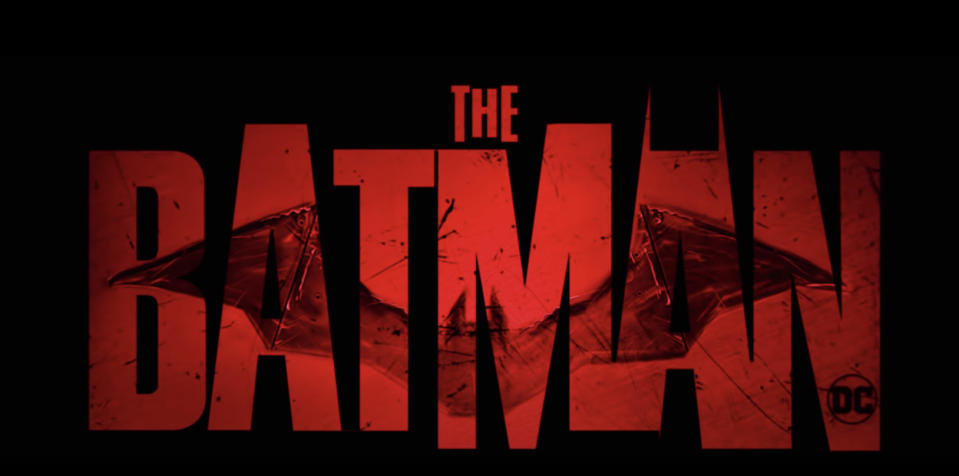
This film, which was released in 2022, gets inside Batman’s head more than other renditions have. The film opens with Batman’s contemplation on how he has contributed to Gotham’s problems. Even though he’s committed to stopping crime, he sees himself as part of the problem and is negotiating how to move forward.
The city, throughout the film, sees blatant corruption exposed by the Riddler. Elected officials and government employees are discovered as allies to those who are circulating drugs all through the city. As the Riddler is exposing this corruption, Batman realizes that the corruption touches every level of government and that on some level, his family was implicated in the corruption.
While the Riddler’s perception of what happened with his family was wrong, Batman’s ideal view of his family is complicated during the film’s events. He emerges with a more nuanced view of his legacy and of himself.
The film itself is dark. The Riddler is a villain who acquires a following on the internet. He has gathered a group of individuals who think like him, which is perhaps the scariest part of the film — but it is also uniquely modern. Previously, villains in the Batman franchise acted alone or with mob help or only a couple of allies, whereas in this Batman film, the power of the internet is on full display.
The economic background of both Batman and the Riddler is a major theme in the film. While Wayne has enormous amounts of wealth, he has suffered real loss with the murder of his parents. The Riddler also grows up without a family, and additionally, he grows up without wealth. In some ways, they are foils to one another. They are both orphans, but their economic situation completely differed. It feels familiar to those familiar with the 21st-century political discourse around economic backgrounds and suggests that money can play a powerful role in success.
At the end of the film, the Riddler is arrested and put in Arkham while Batman deals with the destruction of the city. The film concludes by showing Batman helping rebuild the city and supporting the new mayor, who is committed to rebuilding trust in institutions that people saw the corruption in.
Related
Batman remains committed to the city of Gotham. The film ends on a cliff-hanger of sorts, leading to speculation that the second film will feature Batman’s most famous villain — the Joker.
It’s unclear what Batman’s ultimate fate as a hero will be, as there’s a sequel announced with scant details yet, but like in Nolan’s trilogy, Batman again is a symbol of order and restoring trust in institutions. He rejects chaotic methods from those around him and is committed to conserving and reforming the institutions that harbored corruption.

